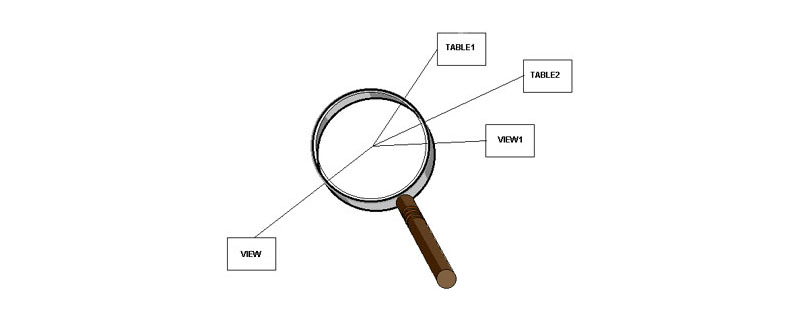
首先关于表与表之间的关系
1.一对一
2.一对多
3.多对一
4.多对多
区分父表与子表
1.”一”的是父表
2.”多”的一方是子表
如何处理一对多关系
在子表中建一个字段(外键)指向父表
如何处理多对多关系
建立一张中间表,将”多对多”关系转化为”一对多”
案例分析
表一: 用户表(it_user)
表二: 用户详情表(it_user_info)
表三: 文章表(it_article)
表四: 国家表(it_country)
表五: 用户角色表(it_role)
① 一对一
用户表(表一)与详情表(表二)就是一对一的关系
②一对多
用户表(表一)与文章表(表三)就是一对多的关系
③多对一
用户表(表一)与国家表(表四)就是多对一的关系
④多对多
用户表(表一)与角色表(表五)就是多对多的关系
用户表建表及测试数据
DROP TABLE IF EXISTS `it_user`; CREATE TABLE `it_user` ( `id` int(10) unsigned NOT NULL AUTO_INCREMENT COMMENT '主键', `name` varchar(64) DEFAULT NULL COMMENT '用户名', `password` char(32) DEFAULT NULL COMMENT '密码(不使用md5)', `country_id` int(11) DEFAULT NULL, PRIMARY KEY (`id`), KEY `国家id` (`country_id`) ) ENGINE=MyISAM AUTO_INCREMENT=6 DEFAULT CHARSET=utf8; -- ---------------------------- -- Records of it_user -- ---------------------------- INSERT INTO `it_user` VALUES ('1', 'xiaoming', '123456', '1'); INSERT INTO `it_user` VALUES ('2', 'xiaomei', '123456', '1'); INSERT INTO `it_user` VALUES ('3', 'xiaoli-new', '123', '1');
用户详情表建表及测试数据
-- ---------------------------- -- Table structure for it_user_info -- ---------------------------- DROP TABLE IF EXISTS `it_user_info`; CREATE TABLE `it_user_info` ( `user_id` int(11) NOT NULL AUTO_INCREMENT, `tel` char(11) DEFAULT NULL, `email` varchar(128) DEFAULT NULL, `addr` varchar(255) DEFAULT NULL, PRIMARY KEY (`user_id`) ) ENGINE=MyISAM AUTO_INCREMENT=4 DEFAULT CHARSET=utf8; -- ---------------------------- -- Records of it_user_info -- ---------------------------- INSERT INTO `it_user_info` VALUES ('1', '13012345678', 'xiaoming@163.com', '北京'); INSERT INTO `it_user_info` VALUES ('2', '15923456789', 'xiaomei@163.com', '上海'); INSERT INTO `it_user_info` VALUES ('3', '18973245670', 'xiaoli@163.com', '武汉');
文章表建表及测试数据
-- ---------------------------- -- Table structure for it_article -- ---------------------------- DROP TABLE IF EXISTS `it_article`; CREATE TABLE `it_article` ( `id` int(11) NOT NULL AUTO_INCREMENT, `title` varchar(255) DEFAULT NULL, `content` text, `user_id` int(11) DEFAULT NULL, PRIMARY KEY (`id`), KEY `user_id` (`user_id`) ) ENGINE=MyISAM AUTO_INCREMENT=4 DEFAULT CHARSET=utf8; -- ---------------------------- -- Records of it_article -- ---------------------------- INSERT INTO `it_article` VALUES ('1', '世界那么大,我想去看看', '钱包那么小,总是不够', '1'); INSERT INTO `it_article` VALUES ('2', '我想撞角遇到爱', '却是碰到鬼', '2'); INSERT INTO `it_article` VALUES ('3', '哈哈哈哈', '嘻嘻嘻嘻', '1');
国家表建表及测试数据
-- ---------------------------- -- Table structure for it_country -- ---------------------------- DROP TABLE IF EXISTS `it_country`; CREATE TABLE `it_country` ( `id` int(11) NOT NULL AUTO_INCREMENT, `name` varchar(255) DEFAULT NULL, PRIMARY KEY (`id`) ) ENGINE=MyISAM AUTO_INCREMENT=3 DEFAULT CHARSET=utf8; -- ---------------------------- -- Records of it_country -- ---------------------------- INSERT INTO `it_country` VALUES ('1', '中国'); INSERT INTO `it_country` VALUES ('2', '美国');
用户角色表建表及测试数据
-- ---------------------------- -- Table structure for it_role -- ---------------------------- DROP TABLE IF EXISTS `it_role`; CREATE TABLE `it_role` ( `id` int(11) NOT NULL AUTO_INCREMENT, `name` varchar(255) DEFAULT NULL, PRIMARY KEY (`id`) ) ENGINE=MyISAM AUTO_INCREMENT=5 DEFAULT CHARSET=utf8; -- ---------------------------- -- Records of it_role -- ---------------------------- INSERT INTO `it_role` VALUES ('1', '开发'); INSERT INTO `it_role` VALUES ('2', '测试'); INSERT INTO `it_role` VALUES ('3', '管理');
用户和角色中间表表建表及测试数据
-- ---------------------------- -- Table structure for it_user_role -- ---------------------------- DROP TABLE IF EXISTS `it_user_role`; CREATE TABLE `it_user_role` ( `user_id` int(11) DEFAULT NULL, `role_id` int(11) DEFAULT NULL, KEY `role_id` (`role_id`), KEY `user_id` (`user_id`) ) ENGINE=MyISAM DEFAULT CHARSET=utf8; -- ---------------------------- -- Records of it_user_role -- ---------------------------- INSERT INTO `it_user_role` VALUES ('1', '1'); INSERT INTO `it_user_role` VALUES ('1', '2'); INSERT INTO `it_user_role` VALUES ('1', '3'); INSERT INTO `it_user_role` VALUES ('2', '1'); INSERT INTO `it_user_role` VALUES ('3', '2');
准备工作
1、规划路由
在routes/web.php下写如下路由:
//ORM的关联关系 Route::get('/orm/relation/{mode}','ORMUserController@relation');
2、在App/http/Controllers/ORM/UserController.php编写relation方法
public function relation($mode) { switch ($mode){ case '1_1': { //一对一 } break; case '1_n': { //一对多 } break; case 'n_1': { //多对一 } break; case 'n_n': { //多对多 } break; default; } }
3、安装debug调试工具
3.1使用composer命令安装
composer require barryvdh/laravel-debugbar
3.2、修改config/app.php文件,加载debugbar到laravel到项目中,在’providers’数组中加入如下配置:
BarryvdhDebugbarServiceProvider::class,
除了安装debugbar调试工具外,也可以使用查询监听:编providers/AppServiceProvider.php的boot方法中加入如下代码
DB::listen(function ($query) { var_dump($query->sql); var_dump($query->bindings); echo '<br>'; });
也可以打印出执行的sql语句。
一对一
1、创建Userinfo模型对象
进入cmd命令行进入laravel项目所在目录执行以下命令
php artisan make:model Userinfo
会在App目录下生成Userinfo.php
2、编辑Userinfo模型文件
<?php namespace App; use IlluminateDatabaseEloquentModel; class Userinfo extends Model { protected $table = 'user_info'; protected $primaryKey = 'user_id'; protected $fillable = ['user_id','tel','email','addr']; public $timestamps = false; }
3、编写UserModel, 加入一对一方法
<?php namespace App; use IlluminateDatabaseEloquentModel; class UserModel extends Model { protected $table = 'user';//真是表名 protected $primaryKey = 'id';//主键字段,默认为id protected $fillable = ['name','password'];//可以操作的字段 public $timestamps = false;//如果数据表中没有created_at和updated_id字段,则$timestamps则可以不设置, 默认为true public function Userinfo() { /* * @param [string] [name] [需要关联的模型类名] * @param [string] [foreign] [参数一指定数据表中的字段] * */ return $this->hasOne('AppUserinfo','user_id'); }
4、编写UserController, 调用一对一方法
public function relation($mode) { switch ($mode){ case '1_1': { //一对一 $data = UserModel::find(1)->Userinfo()->get(); dd($data); } break; default; } }
一对多
1、创建article模型对象
执行命令
php artisan make:model Article
在app下生成Article.php文件
2、编写article模型文件
<?php namespace App; use IlluminateDatabaseEloquentModel; class Article extends Model { protected $table = 'article'; protected $primaryKey = 'id'; protected $fillable = ['id','title','content','user_id']; public $timestamps = false; }
3、编写UserModel, 加入一对多方法
public function Artice() { return $this->hasMany('AppArticle','User_id'); }
4、编写UserController,调用一对多方法
public function relation($mode) { switch ($mode){ case '1_1': { //一对一 $data = UserModel::find(1)->Userinfo()->get(); dd($data); } break; case '1_n': { //一对多 $data = UserModel::find(1)->Artice()->get(); dd($data); } break; default; } } }
多对一
1、创建country模型对象
执行命令
php artisan make:model Country
2、编写country模型文件
<?php namespace App; use IlluminateDatabaseEloquentModel; class Country extends Model { protected $table = 'country'; //真实表名 protected $primaryKey = "id"; //主键id protected $fillable = ['id','name']; //允许操作的字段 public $timestamps = false; //如果数据表中没有created_at和updated_id字段,则$timestamps则可以不设置, 默认为true }
3、编写UserModel, 加入多对一方法
public function Country() { return $this->belongsTo('AppCountry','country_id'); }
4、编写UserController, 调用方法
public function relation($mode) { switch ($mode){ case '1_1': { //一对一 $data = UserModel::find(1)->Userinfo()->get(); dd($data); } break; case '1_n': { //一对多 $data = UserModel::find(1)->Artice()->get(); dd($data); } break; case 'n_1': { //多对一 $data = UserModel::find(1)->Country()->get(); dd($data); } break; default; } } }
多对多
1、创建role模型对象
执行命令
php artisan make:model Role
执行命令
php artisan make:model User_role
2、编写Role模型
<?php namespace App; use IlluminateDatabaseEloquentModel; class Role extends Model { protected $table = 'role'; protected $primaryKey = "id"; protected $fillable = ['name']; public $timestamps =false; }
编写User_role模型
因为表中没有主键字段,所以需要两个字段即可
<?php namespace App; use IlluminateDatabaseEloquentModel; class User_role extends Model { protected $table = 'user_role'; public $timestamps =false; }
3、编写UserModel, 加入多对多方法
public function Role(){ /* * 第一个参数:要关联的表对应的类 * 第二个参数:中间表的表名 * 第三个参数:当前表跟中间表对应的外键 * 第四个参数:要关联的表跟中间表对应的外键 * */ return $this->belongsToMany('AppRole','user_role','user_id','role_id'); }
4、编写UserController, 调用多对多方法
public function relation($mode) { switch ($mode){ case '1_1': { //一对一 $data = UserModel::find(1)->Userinfo()->get(); dd($data); } break; case '1_n': { //一对多 $data = UserModel::find(1)->Artice()->get(); dd($data); } break; case 'n_1': { //多对一 $data = UserModel::find(1)->Country()->get(); dd($data); } break; case 'n_n': { //多对多 $data = UserModel::find(2)->Role()->get(); dd($data); } break; default; } }
总结:
1、一对一使用方法:hasOne()
2、一对多使用方法:hasMany()
3、多对一使用方法:belongsTo()
4、多对多使用方法:belongsToMany()
PHP中文网,大量的免费laravel入门教程,欢迎在线学习!
本文转自:https://blog.csdn.net/weixin_38112233/article/details/79220535



















